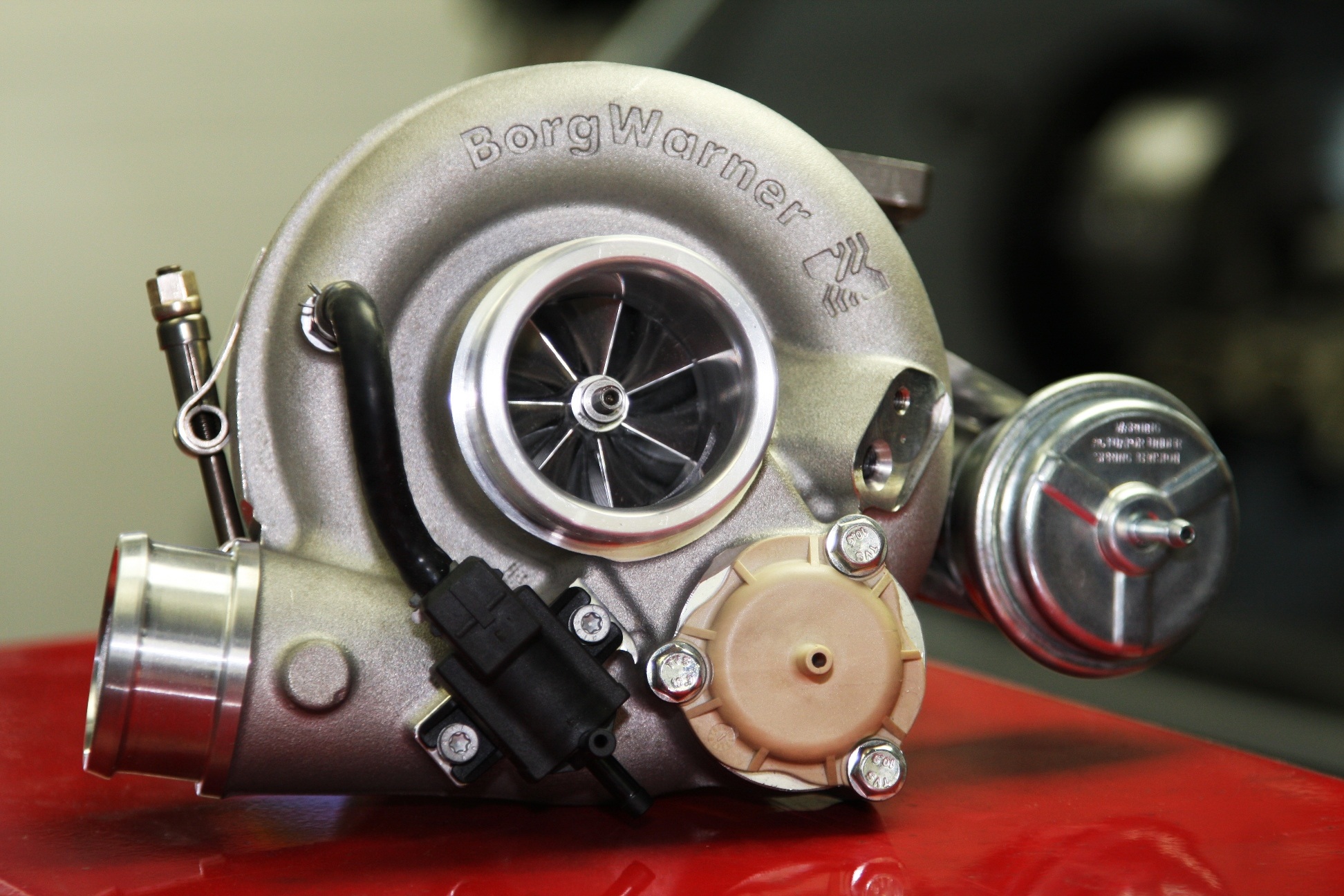Are you tired of the underwhelming performance of your vehicle’s turbocharger? Do you crave that exhilarating boost of power and efficiency?
You’re not alone. Many drivers yearn for the thrill that a well-functioning turbo can provide. But here’s the catch—turbochargers need a bit of care and attention to work their magic. In this guide, you’ll discover simple yet effective ways to ensure your turbo is always in top condition.
Imagine the sheer joy of feeling your car surge forward with newfound energy, all thanks to a few smart tweaks. Ready to unlock the full potential of your ride? Let’s dive into the secrets of keeping your turbo working like a dream.
Turbocharger Basics
Ensuring turbochargers function properly involves checking the oil supply and air filters regularly. Clean components prevent clogs and overheating. Listen for unusual noises, indicating potential issues like leaks or wear. Regular maintenance extends the lifespan of your turbo and enhances engine performance.
Turbocharger Basics Understanding turbochargers can be a game-changer for car enthusiasts and everyday drivers alike. Turbochargers are key components that can significantly boost your vehicle’s performance. If you’ve ever felt that surge of power while driving, a turbocharger might be the secret behind it. Let’s dive into the essentials of turbochargers and see how they work their magic.What Is A Turbocharger?
A turbocharger is a device that boosts an engine’s power output by forcing extra air into the combustion chamber. It consists of a turbine and a compressor connected by a shaft. The exhaust gases from your engine spin the turbine, which in turn spins the compressor. This process increases the amount of air entering the engine, allowing it to burn more fuel and create more power. Think of it as giving your engine a breath of fresh air when it needs it most. It’s like the difference between trying to sprint with a mouthful of air versus taking a deep breath before you run.How Turbochargers Enhance Performance
Turbochargers enhance performance by significantly increasing an engine’s power without the need for a larger engine. This means you get more horsepower and torque, which translates to faster acceleration and improved speed. Imagine you’re driving up a steep hill. With a turbocharged engine, you feel the pull and power that makes you wonder if your car has suddenly grown a pair of wings. Turbochargers also improve fuel efficiency, as they allow engines to produce more power with less fuel. It’s a win-win situation where you gain speed without sacrificing economy. But here’s a question to ponder: How much of that power do you actually use in your daily driving? It’s fascinating to see how a turbocharger balances power and efficiency, making it a favorite among both racers and eco-conscious drivers.Installation Guidelines
Proper installation ensures a turbo works effectively. Check connections, seals, and bolts for tightness. Follow the manufacturer’s instructions for optimal performance.
Turbo installations can seem daunting, but with the right guidelines, you can ensure a flawless setup. Whether you’re upgrading your engine’s performance or replacing a worn-out turbo, following proper installation steps is crucial. Let’s dive into what you need to know to make sure your turbo works efficiently and safely. ###Choosing The Right Turbo
Selecting the right turbo for your engine is a vital first step. Consider the engine size and power output you desire. A mismatch here can lead to inefficiencies or even damage. Consult your vehicle’s manual or a professional to match the turbo specifications with your engine’s needs. If you have a friend who’s passionate about cars, pick their brain for insights. Make sure to check compatibility with your car’s model. The wrong turbo can lead to frustrating installations and potential harm to your engine. So, take time to choose wisely. ###Preparing The Engine
Preparation is key for a successful turbo installation. Start by cleaning your engine thoroughly. Dirt and debris can interfere with the turbo’s performance. Inspect the engine for any existing issues. Address leaks, cracks, or worn-out parts before installing the turbo. You wouldn’t want a new turbo to amplify existing problems. Consider upgrading your engine’s cooling and oil systems. Turbos generate significant heat and pressure, and your engine must be ready to handle these changes. Is your cooling system up to the task? Proper preparation can prevent future headaches. By taking these steps, you’re setting your turbo—and your engine—up for success.Maintenance Tips
Maintaining a turbocharger ensures its efficiency and longevity. Regular care prevents costly repairs and enhances performance. With some straightforward maintenance tips, you can keep your turbo running smoothly. Below are some practical steps to take.
Regular Inspection
Check your turbo regularly for any visible damage. Look for cracks or oil leaks around the housing. Listen for unusual noises while the engine runs. These could indicate potential issues. Regular inspections catch problems early. This can save you a lot of trouble.
Cleaning And Lubrication
Keep your turbo clean and well-lubricated for optimal performance. Remove any dirt or debris around the turbocharger. Use a soft brush or cloth for cleaning. Ensure all moving parts are properly lubricated. This reduces friction and wear. Proper lubrication helps maintain the turbo’s lifespan.

Credit: haynes.com
Troubleshooting Common Issues
Troubleshooting common issues with your turbo can be daunting. Yet, it is essential for maintaining peak performance. Understanding the symptoms of a malfunction can save time and money. Diagnosing problems early helps in avoiding costly repairs. This guide will assist in identifying and fixing mechanical problems effectively.
Identifying Symptoms
Listen for unusual sounds from the engine. Whining or rattling noises indicate trouble. Check for reduced power during acceleration. Slow response can signal a turbo issue. Inspect for excessive smoke from the exhaust. Blue or black smoke often points to problems. Monitor for poor fuel efficiency. Increased consumption suggests a malfunction.
Fixing Mechanical Problems
Begin with a thorough inspection of the turbo and related parts. Look for any visible damage or wear. Ensure all connections are tight and secure. Loose fittings can cause leaks. Clean the turbo components regularly. Dirt and debris buildup affect performance. Replace damaged parts immediately. Worn-out components can lead to further issues.
Optimizing Turbo Performance
Optimizing turbo performance can transform your driving experience. Whether you’re a seasoned car enthusiast or a novice, understanding how to get the best out of your turbo is crucial. Imagine feeling that exhilarating surge as you accelerate, knowing your turbocharger is working at its peak. But how do you achieve that? Let’s dive into some practical ways to enhance your turbo’s performance.
Boost Pressure Adjustments
Boost pressure is key to turbo performance. Adjusting it can make a big difference in how your car performs. You might be wondering, how can you safely tweak this? Start by consulting your vehicle’s manual to find the recommended settings.
Once you know the optimal range, consider using a boost controller. This device allows you to adjust the pressure manually. Many enthusiasts find this gives them more control over their driving experience.
However, be cautious. Increasing boost pressure too much can lead to engine damage. Always ensure your engine can handle the increased pressure before making adjustments. It’s better to find a balance that enhances performance without risking damage.
Enhancing Airflow
Airflow is another vital element for turbo efficiency. Think about how you feel when you breathe deeply; your car’s turbo needs a similar influx of air to perform optimally. Start by checking your air intake system. Is it clean and free from obstructions?
Upgrading to a high-performance air filter can improve airflow significantly. These filters are designed to allow more air into the engine, increasing power and efficiency. They are relatively easy to install, making them a popular choice among car enthusiasts.
Consider the exhaust system too. A free-flowing exhaust helps release pressure quickly, enhancing turbo response. If you’re serious about performance, investing in a high-quality exhaust system could be a game-changer.
Optimizing turbo performance is not just about technical tweaks. It’s about understanding your vehicle’s needs and making informed choices. What changes will you make to experience the thrill of a perfectly tuned turbo? Dive into the details and enjoy the ride.

Credit: www.facebook.com
Safety Precautions
Ensure your turbo functions properly by checking all connections are tight. Regularly clean air filters to prevent blockages. Monitor oil levels to keep the turbo well-lubricated, reducing wear and tear.
Ensuring your turbocharger works efficiently and safely is crucial for both your vehicle’s performance and your peace of mind. Taking the right safety precautions can help prevent costly repairs and maintain optimal functionality. Let’s dive into some essential safety measures.Handling High Temperatures
Turbochargers operate at extremely high temperatures. Mishandling can lead to burns or damage to the turbo components. Always allow your engine to cool down before inspecting or working on the turbo. Consider using a thermal blanket or heat shield. These accessories help manage heat and protect surrounding parts. Have you ever experienced engine knocking or loss of power? This could be a sign of overheating. Keeping an eye on your engine’s temperature gauge can prevent this. Make it a habit to check for leaks. Oil or coolant leaks can escalate heat issues, damaging the turbo. Regular inspection can save you from future headaches.Avoiding Overboost
Overboost occurs when the turbo generates more pressure than the engine can handle. This can damage the engine and the turbo itself. Installing a reliable boost controller can help regulate this pressure effectively. Listen to your engine. Unusual sounds may indicate an overboost condition. Quick action can prevent further damage. Did you know that overboosting can lead to detonation? This can be catastrophic for your engine, so vigilance is key. Always ensure your wastegate is functioning correctly. This component is vital in controlling boost pressure. Regular checks and maintenance can prevent overboost scenarios. Taking these safety precautions seriously can make a significant difference. Have you ever taken a shortcut in maintenance and paid the price? Regular care and attention can save both time and money. Remember, a well-maintained turbo not only performs better but also lasts longer.
Credit: www.motoringassist.com
Frequently Asked Questions
How To Properly Use A Turbo?
To use a turbo properly, regularly check oil levels and ensure proper lubrication. Avoid sudden accelerations and cool down after driving. Perform routine maintenance to prevent carbon buildup. Use high-quality fuel to maintain efficiency. Listen for unusual noises indicating potential issues.
Should I Be Able To Hear My Turbo?
Yes, hearing your turbo is normal, especially during acceleration. Whistling or spooling sounds indicate it’s working. Unusual noises might require inspection.
How Do You Know If Your Engine Can Handle A Turbo?
Check compression ratio, engine internals, and cooling system. Consult manufacturer guidelines for compatibility. Ensure proper tuning and fuel supply.
How Do I Know If My Turbo Is In Good Condition?
Check for unusual noises, reduced power, or excessive smoke. Inspect for oil leaks and ensure proper boost levels. Regular maintenance and professional inspection can ensure optimal turbo condition.
Conclusion
Ensuring your turbo works smoothly is crucial for performance. Regular maintenance keeps it in top shape. Check for leaks and ensure proper lubrication. Clean air filters to prevent clogs. Listen for unusual noises signaling issues. Familiarize yourself with the turbo’s parts and functions.
This helps detect problems early. A well-working turbo boosts efficiency and power. Follow these tips and your turbo will last longer. Proper care saves time and money. So, invest in regular checks. Keep your turbo reliable and effective for years to come.
Stay proactive and enjoy the benefits of a healthy turbo system.
